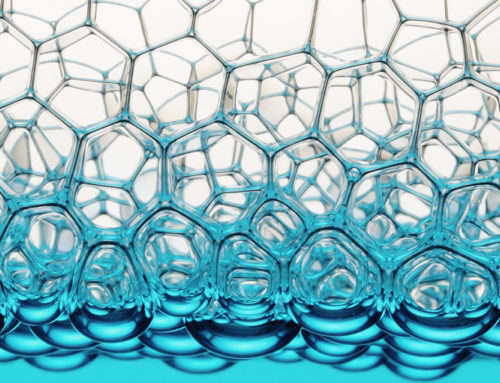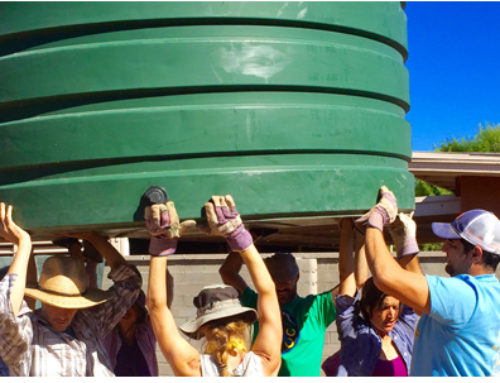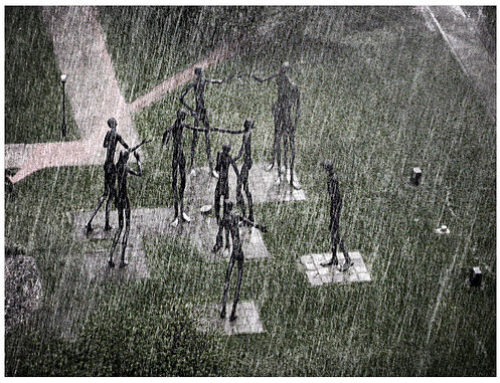-
If you are getting your water from the Colorado River, with sewage being released upstream of your supply, you are already getting toilet to tap! Recycled water is one of our primary water supplies in California!
Making Wastewater Pure Enough to Drink
SINGAPORE — This island nation is aggressively promoting a solution to the water scarcity that vexes countries worldwide: recycling toilet water to drink.
A forklift moves along the rows and rows of “train sections” containing filtration filters at the reverse osmosis facility in Orange County, Calif.
It’s an idea that many people find revolting. But, in Singapore at least, the nearly 5 million residents largely seem to have accepted it as necessary.
“In the past, we had to get water from another country, but what happens if the ties between the two countries are jeopardized?” asks Khaiting Tan, 20, a student at Nanyang Technological University in Singapore. “It’s better to be self-reliant.”
- DRINKING URINE: Astronauts do it aboard the Space Station<
Once heavily dependent on neighboring Malaysia for its water supply, Singapore is unapologetically recycling sewage and other wastewater in a way that the city-state believes will help make it self-sufficient. The treated water — which Singapore claims is nearly as pure as distilled water — is used largely for industrial purposes, including making semiconductors and powering air-conditioning systems. But increasingly, it’s also running out of Singaporeans’ taps.
Wastewater has long been recycled for agricultural and industrial purposes. But only a few places in the world, including Singapore, have been bold enough to add it to the drinking water supply. The technology — if it gains wider public acceptance — could change the face of potential water-rights disputes in places such as the United States, China, Vietnam and Egypt.
“Water is going to be the oil of the 21st century,” predicts Bill Cooper, director of the Urban Water Research Center at the University of California-Irvine.
Water that’s completed reverse-osmosis, left, and water that’s been through it just once, right, at a facility in Fountain Valley, Calif.
Clearly, something needs to be done. Roughly 884 million people — 1 of every 8 in the world — still lack access to safe drinking water, according to the World Health Organization and UNICEF. Meanwhile, water use has increased by more than twice the rate of the world’s population growth during the past century, United Nations data show. Coupled with climate change that’s melting glaciers and increasing droughts, the situation is putting some countries in danger of severe water shortages that could not only stifle their growth, but also jeopardize their residents’ well-being, analysts say.
“Wastewater reuse is part of the solution, not just for drinking but for agriculture and industry,” says Gerard Payen, who is on the U.N. Secretary General’s Advisory Board on Water and Sanitation.
In Windhoek, Namibia, purifying wastewater to drink has been a way of life for decades. The drinking water supply of Fairfax Water, which serves 1.7 million in Northern Virginia, outside of Washington D.C., has included recycled sewage water since the 1970s. About 5% of the area’s daily drinking water now comes from purified sewage.
Only in the past few years, however, has treatment technology improved to the point where a growing number of municipalities and countries are considering adopting wastewater-purification programs.
Parts of Orange County, Calif., began purifying sewer water in the 1970s, but the water district has significantly ramped up capacity so that recycled wastewater now supplies up to one-fifth of the daily water demand of the 2.4 million people within the area. Singapore has built advanced wastewater recycling facilities in less than a decade to meet almost one-third of its daily water needs.
Other parts of the world, from San Diego to Toowoomba, Australia, have considered recycled wastewater for drinking, only to back away because of public outcry.
“The gross-out factor is a big barrier,” admits Jay Famiglietti, director of the UC Center for Hydrologic Modeling.
But as water becomes scarcer, some nations may find they no longer have the luxury of choice. More cities, states and countries are turning to options such as conservation and desalination — when salt is removed from seawater — as well as recycling.
“I don’t really feel that I want to be the champion of drinking sewage water,” says Takashi Asano, who won the Stockholm Water Prize — one of the industry’s highest awards — for his research on wastewater reclamation and reuse. “But something needs to be done, and this is one option.”
The cleansing process
Despite the not-so-pleasant nickname — “toilets to tap” — given to the technology, only about 10% of household wastewater typically comes from toilets, while the rest comes from showers, sinks and laundry machines, says Michael Markus, general manager of the Orange County Water District (OCWD). Orange County also recycles industrial wastewater.
This water flows through sewer pipes to a treatment plant, where solids and certain bacteria are removed before it’s discharged into the ocean or further treated so it meets or exceeds federal drinking standards.
To make the water potable, Singapore and Orange County use several steps. First, during a process called microfiltration, the water passes through a membrane with tiny holes — hundreds of times smaller than a human hair — that trap bacteria. It then undergoes a reverse-osmosis process in which it’s pushed through a second, semi-permeable membrane that blocks salt, viruses and pharmaceuticals. Finally, the water is zapped with high-intensity ultraviolet light and hydrogen peroxide to kill any trace organics.
The resulting water often is cleaner than what you can buy in a store, says Andrew Benedek, who pioneered a wastewater filtering technology now owned by GE Water and in use in Singapore, among other places.
In the USA, the Environmental Protection Agency regulates tap water, and its rules for treating the water are generally stricter than those imposed on bottled water, under the purview of the Food and Drug Administration. No federal law governs recycled wastewater for drinking, but states such as California require additional testing for contaminants.
Yet, because of the controversy surrounding this type of water recycling, public acceptance has become as crucial as politics or cost in whether it’s implemented.
In Toowoomba, Australia, about 80 miles west of Brisbane, residents soundly defeated a 2006 proposal to add recycled wastewater to the drinking supply despite the area’s perpetual water shortage.
“People have misgivings because they think they’re flushing the toilet and the next thing they know, it’s in the tap,” says Eamonn Kelly, a managing director for Black & Veatch consulting firm.
Treated wastewater typically doesn’t go directly into the tap, but is piped into the ground, lakes or reservoirs. It mixes with water from other sources, and may be cleaned further to meet drinking water standards before being funneled to consumers’ taps, often months later.
This “precautionary” step helps to ease public objections, according to Ong Choon Nam, director of the NUS Environmental Research Institute at the National University of Singapore. That’s because, for many people, the reclaimed wastewater doesn’t carry the same stigma once it’s combined with other water.
‘A matter of national security’
Inside Orange County’s sprawling wastewater purification facility, visitors get a detailed tour of the stainless steel pipes, reinforced fiberglass tanks and membranes that turn wastewater into drinking-quality water. The test of the tour’s success comes at the end, when the public is offered a taste of purified wastewater. About 95% end up sampling the clear, flat-tasting liquid, according to Markus, general manager of OCWD.
“When people taste it, they say, ‘If this water is so pure, why do you have to put it in the ground?’ ” Markus says.
Orange County hopes to eventually pump purified wastewater straight into the tap, without mixing it with other water. But that may be another 10 years down the road because of public wariness, he says.
Orange County resident Manuel Sandoval would prefer that seawater be purified instead, because “it wouldn’t gross people out as much.”
Yet Sandoval, 24, a psychology and music student at California State University-Fullerton, suspects most people don’t even know recycled wastewater is added to the drinking supply.
“You always have something to do,” he says. “The last thing on your mind is what’s in the water.”
In many ways, Singapore’s water challenges echo those of Orange County’s.
Both require about 380 million gallons of water a day, about 640 Olympic-size swimming pools. And they both rely on imported water — Orange County from Northern California and the Colorado River, and Singapore from neighboring Johor, Malaysia — to satisfy their demands.
“Whether you’re in Singapore or Southern California, water sources are finite,” says Kevin Cassidy, general manager of Asia-Pacific for GE Water. That’s why “you’re going to see growing populations and industries competing for water.”
Singapore, though, has become known for its military-like efficiency in implementing wastewater recycling.
By 2060, it expects its purified wastewater to accommodate half of the nation’s water demand. It has given out 19 million bottles of its so-called NEWater to athletic groups and at community events. And it’s drawn more than 800,000 visitors to its visitors’ center for wastewater purification demonstrations.
“The reason why (Singapore) moved forward so quickly is that it’s a matter of national security for them,” says Glen Daigger, a senior vice president at CH2M Hill, an Englewood, Colo., engineering firm that designed three of Singapore’s NEWater treatment plants. Singapore also is pitching itself as a hub for advanced water research, attracting companies such as GE Water and Siemens Water Technologies.
The government’s efforts seem to be paying off somewhat, given that many Singaporeans appear to know where their tap water comes from.
“I’ve seen the process (of purifying the water) and it seems pretty safe,” says Samuel Teo, 23.
Still, he adds “I like Evian better.”
Besides what it imports and recycles, Singapore gets water from local catchments and desalination.
Support from environmental groups
For many consumers, the troubling thing about reclaimed wastewater is not what’s known about it, but what’s unknown.
Yet, although there’s a “small chance there could be a long-term problem,” according to Famiglietti, “the chance is no greater than with the water we’re already drinking.”
All water, to some extent, is recycled. River water often is treated and used by one city, then waste may be funneled into pipes and discharged downstream, according to Benedek.
Some environmental groups are betting that as knowledge about wastewater recycling grows, so will its adoption across the USA. Besides alleviating drinking water shortages, the technology means less waste discharged into the ocean, says Rick Wilson, coastal management coordinator at Surfrider Foundation, an advocacy group for oceans and beaches.
The promise is leading San Diego, on the heels of neighboring Orange County’s momentum, to give the technology another shot. It plans to open a test wastewater purification facility, producing 1 million gallons of water a day, to the public in June.
Says Alma Rife of the San Diego Public Utilities Department: “Once people understand this, the yuck factor breaks away.”
http://www.usatoday.com/money/industries/environment/2011-03-03-1Apurewater03_CV_N.htm
- DRINKING URINE: Astronauts do it aboard the Space Station<






